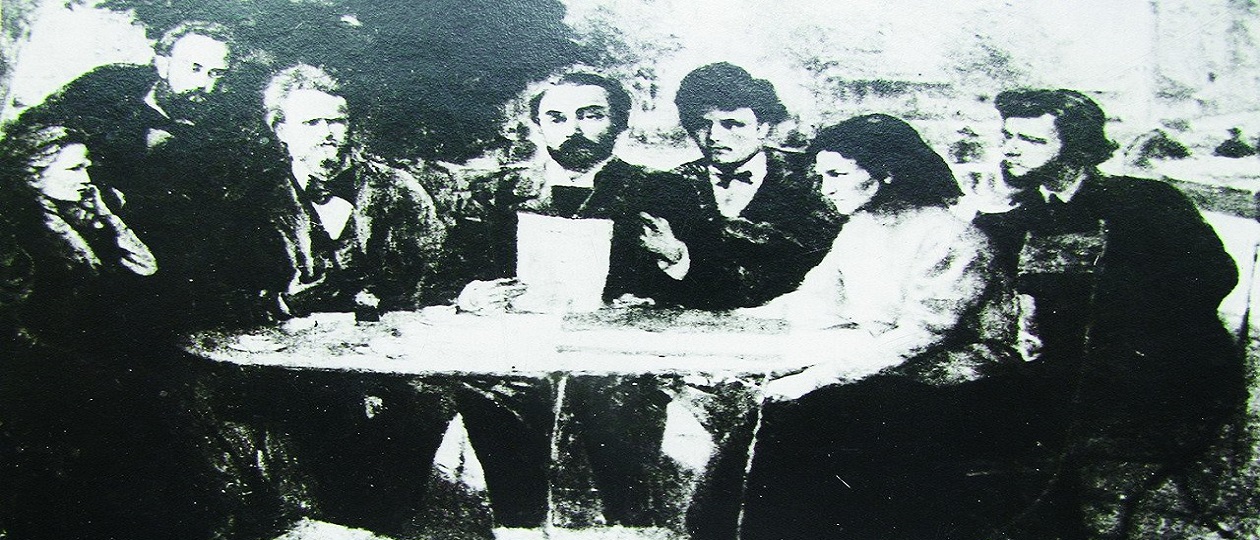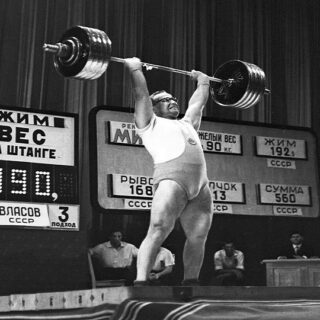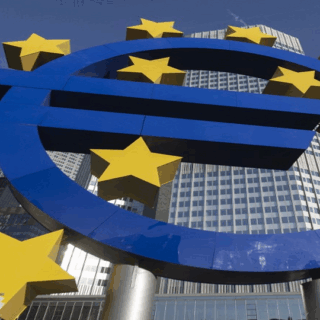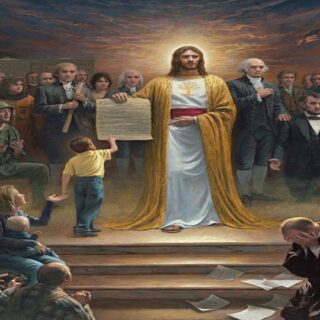
The People’s Will was a political secret society and a revolutionary terrorist conspiracy.
Revolutionary Mystification and Deceit
Political parties were illegal in Russia until the Revolution of 1905-1907 so the narodovol’tsy had no other choice but to form a secret society.
In many ways, the People’s Will, especially its Executive Committee, was the culmination of the history of European political secret societies beginning in the French Revolution. These societies were strictly hierarchical conspiracies with satellite organizations. Members of the societies and satellite organizations had varying degrees of initiation into the goals and secrets of the society. Only those leading the societies had full knowledge of the goals and secrets.
The Executive Committee of the People’s Will had its own strict hierarchy and established satellite organizations among students, local members of the intelligentsia, army and navy officers, workers. After the assassination of Tsar Alexander II, the committee established a satellite organization for religious dissidents — Old Believers and sectarians — because revolutionaries believed that the opposition of Old Believers and sectarians to the Russian Orthodox Church made them possible allies of the revolutionaries.
The committee also tried to gain the support of liberals by suggesting that the narodovol’tsy and liberals had common interests in fighting for political freedom and a constitution. It also tried to gain the support of ethnic minorities in Russia and European public opinion.
However, just like European secret societies the Russian revolutionary conspiracies of the 1860s, the Executive Committee engaged in revolutionary mystification and deceit to attract new members, protect the organization from spies, and to project the image of a powerful conspiracy with supporters in all strata of Russian society.
American historian Adam Ulam suggested that the People’s Will was perpetrating a huge deception not only on the government and society, but also on the organization’s followers and supporters. Members of the Executive Committee when dealing with any outsiders, even in the People’s Will, always identified themselves as <<agents of the third degree>> and never as committee members. Consequently, a person identifying himself or herself as a third-degree agent of the committee would establish satellite organizations. The committee also had agents of the first and second degree with varying degrees of initiation into the goals and secrets of the committee.
Furthermore, Executive Committee members often stated at political trials that the People’s Will was only the activist section of a much larger Russian Social Revolutionary Party. A party was the total number of people holding identical political beliefs, while an organization like the People’s Will was based on solidarity of deeds.
However, revolutionary populists in the 1870s often stated that they were members of the Russian Social Revolutionary Party sharing a common belief in a social revolution. The narodovol’tsy took this idea of a party to another level.
Ulam suggested that the People’s Will was able to say different things to different audiences, especially on controversial issues like the nationalities problem. The narodovol’tsy did want the support of non-Russian ethnic minorities, but they also had to consider Russian nationalist sentiments among society and the intelligentsia.
Any open calling for the breakup of the Empire on ethnic lines would have been regarded by Russian nationalists, even among liberals and socialists, as a Polish plot just like the Polish rebellion of 1863. However, the workers’ section of the People’s Will did call for the granting of self-determination to the nationalities after the revolution. They could stay within Russia or form their own states.
One can say that, like the Apostle Paul, the narodovol’tsy tried to become all things to all people. As Soviet historian Nikolai Troitsky noted <<The program obliged the narodovol’tsy to conduct propaganda, agitational, and organizational work in all strata of the empire’s population from the peasants at the bottom to the bureaucrats at the top to mobilize all discontented elements against tsarism. The People’s Will strived for the maximum widening of its social base, demanding from the revolutionaries to find support among peasants and workers, make contacts in the administration, armed forces, society, come together with liberals and even secure the support of the peoples of Europe.>>
The Executive Committee continually emphasized that terrorism was only one means of the political struggle against the government. However, the committee devoted its financial and human resources to the assassination of the tsar because it believed that the political and social system would immediately collapse with the assassination of Tsar Alexander II. At political trials, Executive Committee members and other narodovol’tsy always emphasized that they were fighting for political freedom and that government repression had forced peaceful propagandists to become terrorists. They usually downplayed their commitment to establishing a socialist society through a revolution.
One can argue that the People’s Will practiced a certain cynicism by emphasizing the struggle for political freedom. However, the narodovol’tsy had to convince fellow socialists that the old ways of ignoring politics and wanting only a social revolution had failed. Populists who felt that the government should be neutral in the struggle between the people and the exploiting classes were deceiving themselves. The government had no illusions about revolutionaries being a political threat and did not plan on straying neutral in a social struggle.
The People’s Will projected an image of itself as an all-powerful revolutionary organization with supporters in all sectors of Russian society. Its self-image generated conspiracy theories that are still published in popular publications in Russia. Conspiracy theorists have written that the accomplices in the assassination of the tsar included Jews, Poles, Ukrainian separatists, generals, senior bureaucrats, aristocrats, and certain members of the Imperial family.
However, the conspiratorial structure of the People’s Will, its attempts to mobilize different groups of the population, and the claims made by conspiracy theorists were really the latest chapter and culmination of the history of European secret societies. Specific Russian conditions shaped the history of the People’s Will, but many of its organizational tactics were based upon European models.
European Secret Political Societies
The period from the start of the French Revolution n 1789 to the outbreak of the European revolutions of 1848-1849 was the golden age of secret political societies in Europe. Revolutionary, antirevolutionary, and counterrevolutionary conspiracies existed in many European countries. Many of these societies existed only on paper or else in the minds of police and conspiracy theorists. However, many Europeans believed in the existence of secret societies and blamed them for the continual political and social turmoil during a revolutionary age. [3, 4] Authors wrote large books about conspiracies and secret societies plotting revolutions everywhere. Belief in conspiracies did not end when political parties in Europe became legal after the Revolutions of 1848-1849. Many Europeans by the late 19th century believed in the existence of a Black International of anarchist terrorists or in a Jewish conspiracy to take over the world.
Secret societies in European countries between 1789-1848 were usually hierarchical conspiracies with satellite organizations. Their organizational structure was based on the structure of Masonic lodges because the lodges were the major type of secret society in most parts of Europe. Masonic lodges generally divided members into categories of varying degrees of initiation into Masonic secrets. The Illuminati-a German secret society originating in Freemasonry — was often blamed by conspiracy theorists for organizing the French Revolution.
The Italian revolutionary Filippo Buonarroti is generally considered the first professional revolutionary. Buonarotti founded many secret societies dedicated to establishing republics and social equality. Russian anarchist Mikhail A. Bakunin called Buonarotti the greatest conspirator of his age. Buonarotti always insisted on a strict hierarchical organization of his secret societies. Members of lower degrees of membership had no right to know the secrets of members holding higher degrees of membership.
Buonarroti also used his secret societies to lead other political societies, influence them, attract new members, and undermine them from within. Violence was permitted because no aims could be considered criminal if they were being used to fight for a holy cause.
The Italian Carbonari between 1808 and the early 1830s competed with a range of secret societies in Italy. The country was filled with many constitutionalist, monarchist, republican, nationalist, and traditionalist antirevolutionary and counterrevolutionary organizations. Carbonari organizations included monarchists and republicans, supporters of a centralized Italian state and supporters of a federal state.
The Carbonari also had satellite organizations. Soviet historian M. I. Kovalskaya suggested that, in an attempt to widen the social base of the movement, the Carbonari organized the <<Carbonari crowd>>–mass organizations of peasants under the control of Carbonari lodges. These organizations were created to protect the Carbonari from their political enemies, especially from the traditionalist secret societies. In other words, members of the <<Carbonari crowd>> could carry out terrorist attacks.
European Teachers and Russian Apprentices
European secret societies served as models for Russian political conspiracies. It is highly probable that the Decembrists of the early 1820s were aware of the Carbonari and certainly they admired Spanish officers for carrying out a revolution in Spain in 1820. N. A. Ishutin, leader of the group Organization, told his followers, including his cousin Dmitri V. Karakozov who tried to assassinate Tsar Alexander II on April 4, 1866, about the existence of a European Revolutionary Committee that aimed to assassinate all European monarchs.
One can argue that the group The People’s Vengeance, created by Sergei G. Nechaev in 1869, closely followed European conspiratorial models. I suggest that most likely Bakunin acquainted Nechaev when they met in Switzerland in 1869 with stories about Buonarotti’s secret societies, the Carbonari, and other European secret societies. As well, Bakunin himself was busy organizing secret societies within the International Workers’ Association [First International] to undermine Karl Marx and his supporters.
The Catechism of the Revolutionary, a program document for the People’s Vengeance, was most likely cowritten by Nechaev and Bakunin or at least Bakunin had a strong influence on it. While the People’s Will did not adopt the catechism in its entirety, they did act upon certain of its advocated tactics. Article 14 proclaimed <<Aiming at implacable revolution, the revolutionary may and frequently must live within society while pretending to be completely different from what he really is, for he must penetrate everywhere, into all the higher and middle-classes, into the houses of commerce, the churches, and the palaces of the aristocracy, and into the worlds of the bureaucracy and literature and the military, and also into the Third Division and the Winter Palace of the Czar.>>
The narodovol’tsy successfully carried this article out. Nikolai Kletochnikov served as a counterspy in the Third Section—the political police—and turned over the names of spies and traitors to the Executive Committee. The worker Stepan Khalturin got a job as a carpenter in the Winter Palace and exploded a bomb there on February 5, 1880, killing 11 people and wounding another 56. Although historians generally emphasize the high moral principles of the People’s Will and how its members saw Nechaev’s methods as immoral, the activity of the Executive Committee showed just how much the People’s Will had applied both Nechaev’s methods and tactics of European secret societies. One can almost suggest that the People’s Will outdid all European secret societies in infiltrating the enemy camp.
The next article will look at how the People’s Will shaped the activities of other conspiratorial political societies in Russia.
Citations
- Ulam, Adam B. In the name of the people: prophets and conspirators in pre-revolutionary Russia. New York: Viking Press, 1977.
- Троицкий Н.А. Крестоносцы социализма.(Crusaders of socialism). Саратов: Издательство Саратовского университета, 2002.
- Roberts, J. M. The mythology of the secret societies. London: Secker & Warburg, 1972.
- Zamoyski, Adam. Phantom terror: political paranoia and the creation of the modern state, 1789-1848. New York: Basic Books, 2015.
- Lehning, Arthur. Buonarotti and his international secret societies. International Review of Social History, Vol. 1, No. 1 (1956), pp. 112-140.
- Rath, R. John. The Carbonari: Their Origins, Initiation Rites, and Aims. The American Historical Review, Jan., 1964, Vol. 69, No. 2 (Jan., 1964), pp. 353-370.
- Ковальская, М. И. Движение карбонариев в Италии 1808-1821 гг.. (The movement of the Italian Carbonari, 1808-1821). Москва: Наука, 1971.
- Sergey Nechayev 1869. The Revolutionary Catechism. https://www.marxists.org/subject/anarchism/nechayev/catechism.htm
- Рокки Тони. Идеологическое и тактическое оружие организации «Народной воли»: как народовольцы стали легендарными в истории терроризма (The ideological and tactical weapons of the People’s Will organization: how the narodovol’tsy became legendary in the history of terrorism). // Сборник материалов VIII Международной научно-практической конференции. 7–9 октября 2020 г. Тула-2021, с. 421-432.





